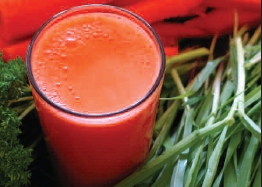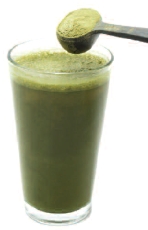Pop quiz: What percentage of Americans eats the proper amount of fruits and veggies each day?
A. 61% B. 44% C. 36% D. 23% E. 11%
If you guessed choice E, I’m sad to inform you that you’re correct. Barely one in 10 people get the recommended five to seven servings of fresh fruits and vegetables per day (1). And because of depleted nutrients in soils, even those who eat plenty of produce may not be getting all the vitamins and minerals they need.
Here’s where green food supplements come into the picture; adding these products to the diet is critical. In a nutshell, green foods are made with a variety of important land and sea plants such as chlorella, carotenoids, spirulina (blue–green algae), cereal grasses (like wheat and barley), broccoli, spinach, kelp, wheat grass and more. These highly nutritious greens are dehydrated into powders or juices and formulated in tableted, capsulated or powdered supplements.
“What is different about supplementing with green food powders is that the consumer is truly supplementing their diets with ‘captured food extracts’ that would otherwise be consumed in a healthier diet,” says Chris D. Meletis, N.D., director of science and research for Trace Minerals Research, Ogden, UT. Cartoon fans will enjoy his analogy: “It is kind of like applying ‘The Jetson’s Technology’ holistically—the Jetson’s being the cartoon where food was reconstituted from pills. Increasing the green foods in one’s diet relative to fresh produce routinely increases alkalinity, which current research points toward improved health and wellness and capacity to maintain live sustaining homeostasis.”
Important pHacts about Alkalinity
Acidity, alkalinity and greens. As Meletis noted, one way that greens benefit the body is by helping it to maintain a proper acidity/alkalinity balance on the pH scale. This pH scale ranges from zero to 14, with seven being neutral. Low numbers indicate higher acidity, which points to an abundance of hydrogen ions (2). Conversely, those at the upper end are alkaline, indicating low levels of hydrogen. Human blood is naturally slightly alkaline (7.35–7.45). Kits are available for consumers to test their pH levels using a saliva sample.
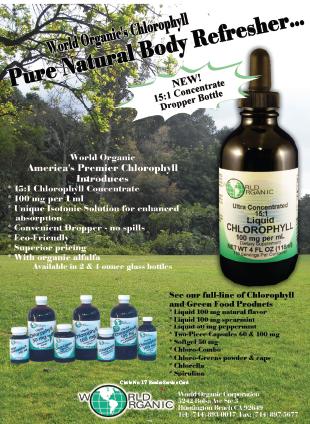 But if you were to randomly test 100 average people off the street, don’t be surprised if a large chunk fell into the acidic category on the pH scale. The culprit, according to Julie Tomlinson, certified nutritional therapist and sales and marketing coordinator for ALL ONE Nutritech, Santa Barbara, CA, has to do with poor eating and lifestyle choices, which can “have an acidifying effect on our bodies.”
But if you were to randomly test 100 average people off the street, don’t be surprised if a large chunk fell into the acidic category on the pH scale. The culprit, according to Julie Tomlinson, certified nutritional therapist and sales and marketing coordinator for ALL ONE Nutritech, Santa Barbara, CA, has to do with poor eating and lifestyle choices, which can “have an acidifying effect on our bodies.”
Being acidic is not a great state to be in, according to many experts interviewed for this article. “Harmful organisms such as bacteria, yeasts and viruses tend to multiply better in acidic environments, so keeping the blood alkaline assists in keeping these at bay,” suggests Paul Licata, president of World Organic, Huntington Beach, CA.
In fact, some researchers believe that if your pH scale levels are chronically acidic, you can experience problems such as fatigue, cardiovascular damage, bone loss, weight gain, immune deficiency and heartburn, says Jay Levy, director of sales at Wakunaga of America, Mission Viejo, CA. Of more concern, he points out that “research from Austria suggests that an acidic environment may increase the risk of Alzheimer’s disease.”
Others link acidic blood to tumor growth and cancer. Mark Timon, M.S., founder and consultant to Vibrant Health, Canaan, CT, explains why: “Trophoblasts (precancerous cells), foci (small collections of malignant cells) and tumors themselves thrive in acidic environments. Tissues that remain alkaline are more resistant to the development of cancer. Eliminating nearly all dairy foods, which are acidifying, and whose casein proteins feed all stages of cancer development, while increasing consumption of greens and whole foods enhances chemoprevention.”
The reason for the negative health effects of acidity may also have to do with how excess hydrogen atoms behave in the body. When too many hydrogen atoms are present, the body can lose oxygen. And, lactic acid can build up, which can lead to diminished cellular function over time. According to Trisha Sugarek, national educator and research and development specialist at Bluebonnet Nutrition Corporation Sugar Land, TX, “Part of natural cell function is to create waste (e.g., urine, sweat), which is mostly acidic and must be flushed out. And our bodies, by nature, work very hard to get rid of the excess acid (e.g., waste), but if they can’t or if the acid builds up for other reasons (e.g., stress, poor diet, infection), an alkaline/acid imbalance can occur, and this is bad news.”
Retailers should note the difference between acidic foods and acid-forming foods, says Murray. “What determines the pH nature of the food in the body is the metabolic end products when it is digested,” he explains, using the example of acidic, but alkalizing foods like lemons. “The citric acid in citrus fruit is metabolized in the body to its alkaline form (citrate) and may even be converted to bicarbonate—another alkaline compound.” Electrolytes—minerals such as magnesium, potassium and calcium—also are alkalizing (2). Alkaline elements attract negative charges, whereas the acidic attract positive charges.
Greens, whole foods and green food supplements (such as those containing barley grass, wheat grass, chlorella or spirulina) play a critical role in helping to maintain a proper pH, too. Says Sugarek, “What makes green powder formulas desirable is the fact that they are completely alkaline-forming and can help your body maintain the right alkaline pH balance that is required for optimal health.”
Murray agrees, adding, “These products not only promote proper pH, but they also are packed with phytochemicals, especially carotenes and chlorophyll and are more convenient than trying to sprout and grow your own source of greens.”
SELECT GREEN AND WHOLE FOODS SUPPLEMENT OFFERINGS
|
Health benefits. So, let’s review. Thanks to their alkalizing and antioxidant properties, green food supplements offer a wide variety of health benefits, which include supporting:
- Immune health, says Marci Clow, M.S., R.D., senior director of product research for Rainbow Light Nutritional Systems, Santa Cruz, CA, especially spirulina (what she calls “one of the world’s most nutritious foods”). Citing research from Japan, she says that a polysaccharide (calcium spirolan) found in spirulina “inhibits many viruses from invading cells, including the herpes and HIV viruses.” Clow adds that researchers from the University of Mississippi have extracted another spirulina compound that “greatly stimulates the immune system” (3).
- Gastrointestinal health, because the dietary fiber of some ingredients like chlorella acts “as a prebiotic to improve digestion,” according to Guinevere Lynn, director of business development at Sun Chlorella USA, Torrance, CA.
- Liver health, thanks to the detoxifying properties of green foods like chlorella found in cereal grasses, says Jonny Bowden, Ph.D., CNS, a board-certified nutrition specialist and author. Andreas Koch, marketing director for Barlean’s Organic Oils, Ferndale, WA, speaks of his company’s greens supplements, which support the “purification and cleansing of vital organs, body tissues and blood supply.”
- Sustained energy. According to James Gibbons, president of Nature’s Plus, Melville, NY, “Consumers report superior results and ‘feeling energized’ when taking dietary supplements with whole foods and live enzymes, as compared to other multivitamin and mineral supplements that did not contain whole foods. Thus, the inclusion of the specific whole foods into such supplements was found to have healthful, energizing effects that are unique, observable and desirable by consumers.”
- Cellular health, because of their antioxidant levels. Antioxidants also support the heart, brain, digestive system, muscles, joints, circulatory and other systems.
- Blood sugar stabilization and appetite suppression.
- Spirulina is a protein source for athletes, children and pre-natal mothers, says Hal W. Strong, national sales manager of Earthrise Nutritionals, Irvine, CA, adding that the algae is made of 65% plant-derived protein. “Ounce for ounce, spirulina packs more protein than soybeans or meats,” he says. Strong also notes that since it does not have hard cellulose in its cell walls, spirulina is 85–95% digestible, which is “particularly useful for older people in whom complex proteins are typically not digested well.”
- Last, Randall Merchant, Ph .D., professor of anatomy and neurosurgery at Virginia Commonwealth University and Sun Chlorella USA scientific advisory board member, tells us about a very interesting health benefit of greens with respect to nutrigenomics. He states, “There is now emerging research on the effects of foods as reflected by which genes become activated or suppressed after consuming them. This new science, known as nutrigenomics, is examining various foods to better understand how our genes react to them.”
Food is well-known to give the body energy and the building blocks for making the proteins, sugars and fats needed to survive. Says Merchant, “Nutrigenomic research also demonstrates that the micronutrients and other components of our food activate or suppress genes that cause measurable physiologic or biochemical responses. Chlorella researchers have been on the forefront of this work.”
In a 2008 study, people with high-risk factors for metabolic syndrome who took a branded chlorella supplement (from Sun Chlorella) experienced changes in their gene expression profiles (those related to fat metabolism and insulin signaling pathways, according to the researchers) (4). “Their results indicated that Sun Chlorella affected genes involved in fat metabolism and the insulin signaling pathways with the net effect of lowering cholesterol and blood sugar, respectively,” states Merchant.
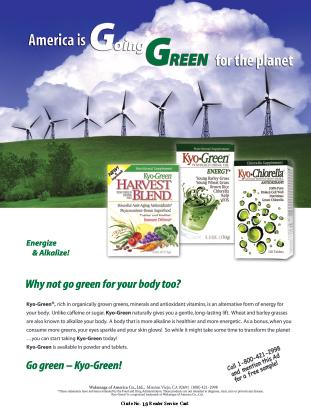 A Guide to Greens
A Guide to Greens
As of press time, a major supplement retailer’s e-store carried more than 300 different green food supplements (5). Given the forest of available greens, one may wonder what distinguishes one type from the other.
Whole Foods contacted industry companies about the types of processing they used to make their line of supplements. The unique processing techniques of green foods cannot be taken for granted. Says Gibbons, “Many manufacturing errors can destroy antioxidant activity. Poor growing conditions, premature harvesting, excessive storage durations, high manufacturing temperatures, poor sterilization techniques and exposure to moisture, air or microbes can deplete green foods of all antioxidant activity.”
Therefore, it’s of the utmost importance to buy products from a high-quality manufacturer that doesn’t use just any old technique and harvests its green crops in a specific manner.
Where and when. For example, there’s a time and a place for harvesting greens, say industry insiders. The time? Immediately! Washing and drying barley and wheat grass right after harvest, says Levy from Wakunaga of America, keeps greens fresh and protected from oxidation.
The precious minutes after harvesting are important to Vibrant Health, too. According to Timon, greens for his company’s supplements are immediately transferred to a refrigerated or freezer truck at the edge of the field, which then transports them to a processing facility.
Companies are equally as choosey about the growing site for their greens. For instance, ALL ONE grows its greens on “a specially selected, dried, ancient volcanic lakebed in Utah at 6,000-ft elevation,” says Tomlinson. And, Ken Whitman, president of Peter Gillham’s Natural Vitality, Burbank, CA, speaks of the importance of growing greens on an organic farm: “Green foods are a source of naturally occurring vitamins, minerals, enzymes and proteins as well as phytonutrients and chlorophyll…Of course, if these foods are ‘conventionally’ grown, you are also ingesting toxins from fertilizers and sprays along with the fact that the nutrient content will be quite variable. It is much better to get organic green foods or foods grown in America without chemicals.”
Sea greens harvesting also requires a meticulously selected growing site. Rainbow Light’s spirulina is grown organically in ponds and Nutrex Hawaii says its spirulina is grown in a Biosecure Zone free of pesticides and pollution and then is cultivated with deep ocean water (which has 94 trace minerals and elements).
Earthrise also has an interesting harvesting and purification technique for its spirulina. According to Strong, the algae moves from Earthrise’s fresh water pond through pipes that connect to a processing building. Here, the algae move through several filter screens “to rinse and concentrate the living biomass,” he explains. Then, the paste is turned into a fine powder.
Low versus high heat. Once harvested, several companies were quick to point out that they use only low-heat processing. Meletis of Trace Minerals Research says this is key for the formula’s potency. Minimal heat “allows the enzymes that naturally occur within the plant to be retained while capturing phytonutrients, vitamins and minerals,” he says. Creating a product with a full array of nutrition is important, according to Meletis, because only 11% of Americans get the recommended five to seven servings of fresh fruits and vegetables per day, as previously stated (1).
Because many companies place a strong emphasis on using low-temperature drying techniques, firms are also innovative about the exact drying method they use. Stacey Gillespie, director of marketing at MegaFood, Derry, NH, for instance, says her company uses a special self-limited drying technology during the dehydration of plants such as broccoli. The equipment, called a Refractance Window Dryer, gently dries materials with energy from infrared light rather than using direct heat. The result, she explains, is that “the nutritive value and sensory qualities including color, taste and aroma of the fresh whole food are not destroyed and the nutritional value of the dried food is better than foods dried using more common processes such as spray drying.”
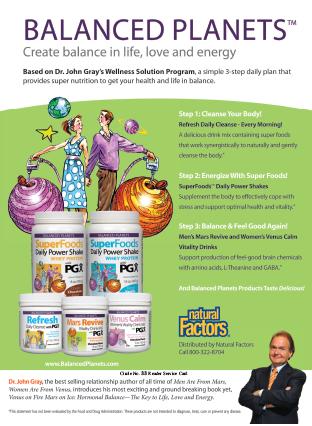 Drying techniques used at other companies, like Garden of Life, West Palm Beach, FL, include low-temperature spray drying and “a twist on vacuum drying,” according to Jordan S. Rubin, founder and CEO. During spray-drying, the liquid is sprayed in the form of a fine droplet into a wave of low-temperature air to turn it into powder, and in vacuum drying, a vacuum is used to condense the material. These techniques also preserve the green’s nutritional value and color.
Drying techniques used at other companies, like Garden of Life, West Palm Beach, FL, include low-temperature spray drying and “a twist on vacuum drying,” according to Jordan S. Rubin, founder and CEO. During spray-drying, the liquid is sprayed in the form of a fine droplet into a wave of low-temperature air to turn it into powder, and in vacuum drying, a vacuum is used to condense the material. These techniques also preserve the green’s nutritional value and color.
Natural Factors uses proprietary EnviroSimplex processing. Raw materials are mixed, liquefied, blended, dried (using vacuum pressure) and gently agitated to remove moisture all in one chamber. The result, says the company, is less oxidative damage than that which occurs with other drying techniques, says the company.
High-heat techniques may be appropriate for some materials. Gibbons raises the point that heating is “perfect for the extraction of heat-stable carotenoids, such as beta-carotene, lutein and lycopene,” though it is “incompatible with some of the more delicate nutrients, such as sulforophane in broccoli or alliins in garlic.”
In the end, techniques are chosen with the specific nutrient and each specific application in mind, says Gibbons. “This is the only way to ensure the optimal activity and results our consumers deserve.”
A Whole New World of Nutrition
A separate, but complimentary area of nutrition is whole-food multivitamins and supplements. This category can have some crossover with greens, while other whole-food products incorporate mostly or all non-green fruits and vegetables.
Some feel the main advantage of whole-food supplements is that the end product contains all the nutrients of the original fruit or vegetable rather than just one part. Whole-food supplements, says Levy, offer a “broad spectrum of nutrients that work synergistically to benefit the body.” In contrast, synthetic vitamins (or isolates) contain only specific forms of nutrients. “For example, a synthetic vitamin C supplement may contain only ascorbic acid,” Levy explains. “A supplement made from a food source like oranges, on the other hand, contains various forms of vitamin C as well as bioflavonoids, fiber and other important nutrients that can beneficially impact health.”
Also consider a study from Nature, cited by Gillespie, in which researchers found that a whole apple extract seemed to have enhanced antioxidant properties because of its natural combination of phytochemicals (6). “This study is one of many that reveal the importance of whole foods in nutrient delivery and that even at a lower potency, the vitamin C delivered in a whole food had significantly higher bioactivity than a much higher potency of the isolated nutrient form,” she states.
 Timon of Vibrant Health also emphasizes the importance of whole-food nutrition: “Optimal nutrition results from a nuanced interplay of biochemically active substances. There is no single nutrient that is the panacea.”
Timon of Vibrant Health also emphasizes the importance of whole-food nutrition: “Optimal nutrition results from a nuanced interplay of biochemically active substances. There is no single nutrient that is the panacea.”
But, others disagree slightly. While using isolated minerals and vitamins can create an imbalance of nutrients, “taking vitamins ‘as they exist in nature’ creates a whole new set of problems as it is very difficult to control potency and the amount of intake of these types of nutrients. Biochemically, for a vitamin or mineral to be extracted from food, it will need to be combined with another molecule to make it stable,” Tomlinson feels.
Clow of Rainbow Light believes that some isolated minerals or vitamins have benefits over certain nutrients in their natural forms. The real issue, she says, is “whether the resulting molecular structure is the same as the corresponding structure found in nature. When the synthetic molecule is identical to the form derived from natural sources, both forms will be indistinguishable from each other in all aspects—including their function and effects in the human body…So in summary, Rainbow Light uses the most efficacious form of the nutrient.”
For example, she feels the absorption efficiency of natural folate is about 50% that of folic acid (the synthetic form of folate) in most people. In contrast, the March of Dimes says 85% of folic acid in fortified foods and 100% of folic acid in a vitamin supplement is absorbed in most people. On the other hand, Levy says a recent clinical trial by the Institute of Food Research “found that folate from whole foods is more bioavailable than folic acid supplements.”
Another distinction is that some research indicates that food-based supplements are easier for the body to absorb than synthetic vitamins and are gentler on the stomach. Says Rubin, “The body has been created to consume nutrients from food. Any time you consume a chemical or isolated ‘nutrient’ your body is forced to deal with it, much like it would a drug...the body prefers foods.”
Whitman agrees and adds a twist: “The concept of whole food is that the nutrients exist in their whole environment and, as nature intended, are inherently digestible. But we have long experience that also tells us that individual supplements such as vitamin C and magnesium, to name just two, can be well absorbed on their own.” WF
GETTING ENOUGH GREENS HAS NEVER BEEN EASIER BY MEGHAN COATES Just as there are numerous health benefits that come from green foods, there are a variety of ways to get them. Green foods come in three basic types: tablets/capsules, powders and liquids. Depending on one’s lifestyle and specific needs, one type may be more helpful than the others. Tablets and capsules deliver a concentrated dose of green foods. For people that do not have the time to make smoothies with powders or do not like the taste of these drinks, capsules are perfect. Another benefit of using these forms is the convenience that they offer. For people who travel often, it is often easier to bring along a bottle of tablets or capsules rather than powders. Jordan Rubin, founder and CEO of Garden of Life, believes “the reason to tablet or encapsulate green foods is twofold: one, convenience and two, for those who are too wimpy to drink the green stuff straight!” However, for those who have trouble swallowing tablets, or who enjoy a nutritious smoothie in the morning, perhaps a powder would be better suited. Trisha Sugarek, national education and R&D specialist at Bluebonnet Nutrition Corporation, points out that “powdered green formulas can be used in smoothies, or any other medium the imagination can conjure up…making the product available on the go, taste-great and convenient.” For example, the powder can be mixed into drinks, baked into breads and added to soups. A powder might also be helpful for consumers concerned with weight loss and related health issues. Jonny Bowden, CNS, board certified nutrition specialist, says, “The additional benefit to the powder is that when mixing a drink, it’s filling, appetite suppressing and helps even out blood sugar.” For consumers who would prefer a ready-made, non-tableted option, they can get their green foods through a liquid supplement. Ken Whitman, president of Peter Gillham’s Natural Vitality, says, “any form is going to end up as a liquid eventually, so why not speed the process and start with a liquid?” Likewise, a liquid is more easily absorbed into one’s body, while some pills take up to 45 minutes to break down once ingested. There are a number of delicious, naturally flavored green drinks and liquid supplements available for those who do not like the taste of straight green foods. Whitman also adds that people are more likely to continue using a product that tastes good. Great-tasting drinks will keep consumers excited and willing to use more green food supplements. In agreement is Christopher Daniels, corporate brand and product development director of Greens Plus, Vero Beach, FL, who uses some unique flavors from his company’s line as an example: “With the addition of great-tasting flavored versions of Greens Plus, like Wild Berry Burst and Orange Greensicle, consumers can still enjoy the taste and experience of green drinks.” Serving size is another distinguishing factor among these supplement forms. Paul Licata, president of World Organic, explains, “the main difference is convenience and the quantity one must take.” Often, several capsules must be taken to equal the amount of nutrients in a serving of powder or liquid. Marci Clow, senior director of product research at Rainbow Light Nutritional Systems, adds, “Powders generally have larger serving sizes and therefore deliver more green food.” While this may be true for some powders, due to their convenience, tablets can be taken more consistently throughout the day to increase the overall intake of green foods. Green food preferences are really based on the user’s lifestyle. Tablets are easy to carry through the day and to take while traveling. Powders offer the convenience of being combined in things that one already eats, making them easy to incorporate a dose of green foods into a daily routine. Liquids are perfect for those who like the taste of fresh green foods and who do not have the time to mix up powdered drinks. Whichever is right for a consumer’s lifestyle, there is sure to be a way to make green foods a consistent part of any diet. |
References
- S. Stark Casagrande, “Have Americans Increased Their Fruit and Vegetable Intake? The Trends Between 1988 and 2002,” Amer. J. Prevent. Med. 32 (4), 354–355, (2007).
- B. Mars, Rawsome! (Basic Health Publications, North Bergen, NJ, 2004).
- International Scientific References on Spirulina, courtesy of Earthrise Farms Spirulina Library, www.naturalways.com/spirulina-references.htm, accessed April 23, 2010.
- T. Mizoguchi, et al., “Nutrigenomic Studies of Effects of Chlorella on Subjects with High-Risk Factors for Lifestyle-Related Disease,” J. Med. Food. 11 (3), 395–404 (2008).
- Vitamin Shoppe, www.vitaminshoppe.com, accessed April 22, 2010.
- M. Eberhardt, C. Lee and R. Liu, Nature, vol 405, 903-904 (2000).
Published in WholeFoods Magazine, June 2010


